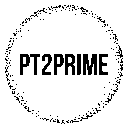I walked into a thrift store with my phone and scanner in hand. Within minutes, ScoutIQ told me exactly which books were worth buying.
No guessing, no wasted time flipping through shelves—just clear data showing me what could actually turn a profit. ScoutIQ makes sourcing books simple by scanning barcodes and giving instant buy or pass decisions based on your own profit goals.

I use ScoutIQ at thrift stores, library sales, and big book sales because it saves me from hauling home books that won’t sell. The app runs in two modes: database mode for fast offline scanning, and live mode for real-time Amazon data.
Both are useful depending on internet connection and how fresh you want the data to be. Custom triggers let me set my own profit and ROI rules so the app only flags books that fit my business strategy.
When I customize my triggers, I decide the minimum profit I want, the sales rank I’m comfortable with, and the ROI that makes sense for my budget. That way, every time I scan a book, the app filters out the noise and only shows me the ones that meet my standards.
This keeps me focused and efficient while sourcing. Whether I’m moving quickly through a crowded sale or scanning quietly in a small shop, it’s a game changer.
Key Takeaways
- ScoutIQ helps you scan books and instantly see profit potential
- Database and live modes give you flexibility while sourcing
- Custom triggers keep your buying decisions aligned with your goals
Why I Use ScoutIQ
I rely on ScoutIQ because it gives me clear data when I’m standing in front of shelves full of books. Instead of guessing, I can see profit estimates, sales rank, and demand in seconds.
This makes sourcing faster, more accurate, and honestly, way less stressful.
Short Story About Scanning a Book and Finding a Hidden Gem
At a local thrift store, I once scanned a dusty textbook that looked like it hadn’t been touched in years. The cover price was $1.50.
When I scanned it with ScoutIQ, the app showed a strong sales rank and a net profit of over $20 after fees. Without the scan, I would’ve left it behind.
The book didn’t look valuable, and I had no way of knowing its demand. ScoutIQ pulled data from Amazon instantly, showing me the used buy box price and recent sales history.
That one scan paid for my entire trip. I’ve repeated this process at library sales and larger book sales, where scanning quickly uncovers books that don’t stand out at first glance.
Why Tools Save Time Compared to Guessing
When I started, I tried to judge books by appearance—textbooks looked promising, while novels seemed like a waste of time. That approach missed a lot of profitable titles.
ScoutIQ eliminates that guesswork by giving me exact numbers. Instead of flipping through pages or searching Amazon manually, I scan the barcode and see:
- Net profit after fees
- Sales rank and demand
- Prime and used prices
This saves hours at sales where thousands of books are stacked on tables. I can scan quickly and move on, focusing only on books that meet my profit goals.
I also customize my triggers in ScoutIQ. For example, I set a minimum net profit of $3 and require at least a 30% ROI.
If a book doesn’t meet those numbers, the app automatically rejects it. This keeps my buying decisions consistent and aligned with my business goals.
What Is ScoutIQ?
ScoutIQ is a mobile app I use to scan books and quickly see if they’re worth selling on Amazon. It shows me the sales rank, estimated profit after fees, and other key details so I can make fast buying decisions right on the spot.
Basic Explanation of What It Does
When I scan a book’s barcode with ScoutIQ, the app pulls up information from Amazon and other data sources. It tells me how often the book sells, what it usually sells for, and how much money I could make after Amazon fees and shipping costs.
The app highlights whether a book is a good buy using triggers. Triggers are rules I set up that tell ScoutIQ what counts as a profitable book for me.
For example, I might set it to show green if I can earn at least $3 profit and the book sells at least once a month. This saves me from doing math in my head or looking up each book manually.
Instead, I get a simple “buy” or “don’t buy” signal based on the numbers I care about. That way, I can move quickly through stacks of books at thrift stores or sales without wasting time.
Difference Between Live Mode and Database Mode
ScoutIQ has two ways to pull book data: Live Mode and Database Mode. Live Mode connects directly to Amazon’s servers each time I scan.
This gives me the most current information, but it requires internet access and can be slower if the connection isn’t strong. Database Mode is different.
I download a large chunk of Amazon’s book data to my phone ahead of time. Then when I scan, the results show up instantly, even if I don’t have Wi-Fi or cell service.
This is huge at library sales where internet can be spotty. I usually use Database Mode when scanning hundreds of books quickly.
If I need the absolute latest price or sales rank, I switch to Live Mode for that specific book. Having both options makes sourcing smoother and much more efficient.
How I Customize My ScoutIQ Triggers
I adjust my triggers so the app only flags books that fit my goals. For example, I set a minimum profit of $3 and a minimum ROI of 100%.
That way, I don’t waste time on books that tie up money without enough return. I also tweak sales rank requirements.
If a book has a higher profit margin, I allow a slower sales rank. For cheaper books, I want them to sell faster, so I set stricter rank limits.
Here’s a simple example of how I set mine:
| Rule | Setting | Why I Use It |
|---|---|---|
| Profit | $3+ | Ensures each book is worth the effort |
| ROI | 100%+ | Doubles my money on each sale |
| Sales Rank | Under 2 million (flexible) | Balances profit with sell-through speed |
By customizing triggers, I let ScoutIQ do the heavy lifting. The app filters out books that don’t meet my standards, so every “green light” scan feels like a safe buy.
Setting Up ScoutIQ

I start by making sure ScoutIQ is linked correctly to my Amazon account. Then I customize my triggers to match the kind of profits I want.
These two steps give me accurate data while I’m scanning and keep me from wasting time on books that don’t meet my goals.
How to Connect Your Amazon Seller Central
The first thing I do is connect ScoutIQ with my Amazon Seller Central account. This link lets the app pull in live pricing, sales rank, and restrictions directly from Amazon.
Without this step, the scans won’t give me the full picture. To connect, I log into the ScoutIQ web portal.
Then I go to Settings → Amazon MWS Keys (in some versions it may say API access). Amazon provides me with credentials like Seller ID, Marketplace ID, and Auth Token.
I copy those into ScoutIQ, hit save, and test the connection. Once it shows as active, the app can check restrictions on the fly.
For example, if I’m restricted from selling a certain textbook, ScoutIQ will alert me before I even consider buying it. This step might sound technical, but it only takes a few minutes.
After that, the app is ready to give me real-time data every time I scan a barcode.
Setting Your Triggers (Profit Thresholds, Rank Rules)
After connecting, I set up my triggers. Triggers are rules that tell ScoutIQ which books I want to buy and which ones I want to skip.
This saves me from analyzing every book by hand. For example, I create a trigger that requires at least $3 net profit and a minimum 30% ROI.
I also add rank rules, like only buying books under 1 million rank in Books, since that usually means they’ll sell faster. Here’s how I customize mine:
| Trigger Rule | My Setting | Why I Use It |
|---|---|---|
| Minimum Profit | $3 | Covers fees and leaves room for mistakes |
| ROI | 30% | Ensures I’m not tying up money in low returns |
| Sales Rank | <1,000,000 | Faster turnover |
| Restricted Check | On | Avoids books I can’t list |
I duplicate the default trigger set, rename it, and adjust the numbers to fit my goals. Over time, I tweak these settings as I learn what sells best in my area.
By setting clear rules, the app gives me instant “Accept” or “Reject” results when I scan. It really makes sourcing at thrift stores and sales much faster.
Using ScoutIQ in the Field
I rely on ScoutIQ to make faster sourcing decisions when I’m standing in front of shelves full of books. The app helps me filter out unprofitable titles and focus on books with steady demand.
It lets me move quickly through large stacks without second-guessing myself. Honestly, it’s made the whole process less overwhelming—and even a little fun.
Example: Scanning Books in a Thrift Store
Whenever I step into a thrift store, I grab a cart and head right to the book section. If I’ve already downloaded the latest data, I pop open ScoutIQ and switch to Database Mode—no need to worry about spotty Wi-Fi.
I scan each book’s barcode with my phone’s camera or a Bluetooth scanner. If it meets my trigger settings, the screen flashes green; if not, it’s red.
This quick feedback keeps me moving and stops me from overthinking every title. I’ve noticed that nonfiction categories—textbooks, self-help, business—tend to be the biggest winners.
Fiction? It’s hit or miss, so I just scan fast and don’t linger. With ScoutIQ, I can knock out an entire shelf in a few minutes, which feels pretty satisfying.
Example: Scanning Quickly at a Library Sale
Library sales are a whole different beast—fast-paced and, honestly, a little chaotic. Here, I always switch to Live Mode because I want the freshest pricing and sales rank data straight from Amazon.
This helps me dodge any last-minute surprises. I’ll scan books in batches and toss anything green-triggered into my box.
I don’t bother re-checking during the sale; I’ll review my picks before checkout to double-check margins. For speed, I use a small Bluetooth scanner clipped to my finger—no need to wave my phone over every barcode.
At big sales with crowds of scanners, every second counts. This little setup makes a bigger difference than you’d think.
Reading the Data: Green vs Red Triggers, Rank, eScore
Triggers are just the rules I set in ScoutIQ to decide what’s a “buy.” Maybe I want at least $3 profit and 30% ROI before anything turns green.
I tweak these numbers whenever my goals shift. The app also shows Sales Rank and eScore.
Rank tells me how recently a book sold; eScore shows how many times it’s sold in the last six months. If a book has a low rank and a high eScore, it’s probably going to sell fast.
Here’s a quick visual rundown:
| Indicator | What It Means |
|---|---|
| Green Trigger | Meets my profit/ROI rules |
| Red Trigger | Doesn’t meet my rules |
| Low Rank | Book sells frequently |
| High eScore | Strong sales history |
I use these together—triggers, rank, eScore—to make buying decisions on the fly. No need to stand there second-guessing myself.
Analyzing the Data
When I’m scanning books with ScoutIQ, I’m really just watching the numbers: profit, ROI, and sales rank. Custom triggers help me move fast and avoid getting stuck in analysis mode.
What the Numbers Mean (Profit, ROI, Rank)
Profit is what I actually keep after Amazon fees and shipping. If ScoutIQ says $3 profit, that’s real money in my pocket.
I usually shoot for $3–$5 profit per book. ROI (Return on Investment) is the percentage return compared to what I paid. For example:
| Buy Cost | Profit | ROI |
|---|---|---|
| $1 | $3 | 300% |
| $2 | $4 | 200% |
I prefer ROI above 100%, especially when I’m buying cheap. Sales rank tells me how fast a book might sell—under 500k is usually a good sign, but I always check eScore too.
A low rank without sales history can be misleading, so I never trust rank alone. That’s bitten me before.
When to Pass on a Book vs When to Buy Instantly
If a book has low profit (under $2) or a weak ROI, I just pass. Same goes for books with a sky-high rank (over 2 million), unless the profit is wild and the eScore shows steady sales.
When profit, ROI, and sales rank all look strong, I don’t hesitate. For example, a $1 book selling for $15 FBA, $8 profit, 400% ROI, and an eScore of 20+? That’s an instant buy.
To make this even easier, I set up my ScoutIQ triggers to accept books with at least $3 profit and 100% ROI. Anything less gets rejected on the spot.
That way, I’m not stuck analyzing every little detail when I’m scanning hundreds of books at a sale.
Integrating With Your Workflow
I see sourcing, prepping, and reinvesting as one big loop. ScoutIQ helps me make faster decisions, but I also lean on other tools and routines to keep things moving.
Box Up and Prep Books
After scanning and buying, I jump straight into prepping. My supplies are basic: boxes from Home Depot, packing tape, and a roll of bubble wrap for the odd fragile set.
Having everything ready saves a lot of scrambling. I sort books by condition—Acceptable, Good, Very Good, Like New—so listing is a breeze.
I’ll clean covers with alcohol wipes and peel off stickers so the books look sharp for buyers. For shipping to Amazon FBA, I weigh each box to stay under 50 lbs and print labels through Seller Central.
Sticking to a repeatable prep routine keeps my turnaround time short. That means my inventory goes live faster, which is always nice.
How ScoutIQ Complements Keepa and SellerAmp
ScoutIQ tells me if a book’s profitable right now, but I don’t stop there. I’ll use Keepa to check sales rank history and see if a book sells steadily or just in random bursts.
When I want extra detail on competition and fees, I pull up SellerAmp. It’s handy for comparing FBA vs. FBM offers to see if I can actually compete.
Mixing these three tools helps me avoid rookie mistakes—like buying a book that looks good today but has no real demand. ScoutIQ gives me speed, Keepa gives me context, SellerAmp adds the fine print. It’s a solid combo.
Reinvesting Profits Into Better Sourcing
I don’t cash out my book sales right away. Instead, I reinvest profits into more inventory and better tools so my business can snowball.
I’ll set aside a chunk from each payout for sourcing trips—maybe that means buying extra boxes at a library sale, or driving out to a bigger thrift store. Over time, these reinvestments help me find more valuable books.
I also put money back into software. ScoutIQ was my first big tool, but I added Keepa and SellerAmp once profits allowed. Spending on the right tools pays off; they help me make smarter buys and keep sales steady.
Customizing ScoutIQ Triggers
I never stick with ScoutIQ’s default triggers. I set my own rules so the app only flags books that hit my profit and ROI targets.
For instance, I want at least $3 net profit and a minimum 30% ROI. I’ll tighten triggers for textbooks since I want higher margins, but I’ll let lower-ranked fiction slide if it’s moving fast.
Here’s a quick look at how I set mine:
| Category | Min Profit | ROI % | Max Rank | Notes |
|---|---|---|---|---|
| Textbooks | $5 | 40% | 1,000,000 | Higher margin required |
| Nonfiction | $3 | 30% | 1,500,000 | Bread-and-butter books |
| Fiction | $2 | 25% | 750,000 | Only if fast-selling |
Custom triggers filter out the junk and keep me focused on books that really fit my model. It saves a ton of time and mental energy.
Conclusion & Next Steps
I lean on ScoutIQ every time I go sourcing. With the right trigger settings and knowing when to use database or live mode, I can scan fast and zero in on books that meet my profit goals.
Encourage New Sellers to Start Scanning
If you’re just starting out, honestly, the best thing you can do is start scanning. Even if you don’t buy anything at first, you’ll get a feel for how ScoutIQ works and how the triggers help guide your calls.
I tweak my triggers to match my own profit and ROI goals. For example, I might set a minimum net profit of $3–$4 and aim for a 100% ROI or higher. That way, I steer clear of low-margin books that just tie up cash.
Here’s a quick example of how I set up my preferences:
| Setting | My Preference | Why I Use It |
|---|---|---|
| Min Profit | $3.50 | Covers fees and leaves room for mistakes |
| ROI % | 100%+ | Doubles my money on each flip |
| Sales Rank | Under 1M | Ensures steady sales velocity |
Once you’ve tested a few settings, you’ll find your sweet spot. Don’t be afraid to tweak things as you go—everyone’s business is a little different.
Link to Related Book Sourcing Resources
If you want to dig deeper, there are plenty of free and paid resources that can help you sharpen your sourcing skills.
I recommend checking out Amazon Seller University (external link: sellercentral.amazon.com/learn) for official guidance on fees, shipping, and listing processes.
Another useful resource is Book Sale Finder (external link: booksalefinder.com), which lists upcoming library and community book sales.
I use it to plan sourcing trips in advance. It’s honestly been a lifesaver for mapping out which sales to hit each month.
For practical scanning tips, I suggest reading forums like FBA Mastery.
You’ll also find a lot of gold on YouTube channels focused on book flipping—real sellers sharing how they use tools like ScoutIQ in the wild, not just in theory.
Frequently Asked Questions
I rely on ScoutIQ to make fast, informed decisions when sourcing books. It helps me scan, analyze, and decide whether a book is worth buying, no matter if I’m at a thrift store, a library sale, or some hectic book event.
What is ScoutIQ and how can it benefit a beginner Amazon seller?
ScoutIQ is a book scouting app that scans ISBN barcodes and gives me real-time data on whether a book is profitable to resell on Amazon.
It saves me a ton of time by showing sales rank, pricing, and profit estimates in seconds. As a beginner, this means you won’t be stuck guessing—you’ll know exactly which books are worth your money.
Can you guide me through the process of using ScoutIQ to scan books for resale?
I open the ScoutIQ app, use my phone’s camera or a Bluetooth scanner, and scan the barcode on the back of the book.
The app instantly shows me the book’s Amazon sales rank, buy box price, and potential profit after fees. If the numbers look good, I toss the book in my cart and move on.
What are triggers in ScoutIQ and how do I set them up effectively?
Triggers are rules I set in ScoutIQ that tell me when to buy or reject a book. For example, I can set a trigger to only accept books with a profit of at least $3 and a sales rank under 1 million.
I customize my triggers to match my profit and ROI goals. Personally, I like to shoot for a minimum 30% ROI, so I adjust the settings to weed out books that don’t cut it.
Could you explain the difference between database mode and live mode in ScoutIQ?
Database mode lets me download book data ahead of time, so I can scan quickly without needing an internet connection. This is super handy at library sales where Wi-Fi is spotty or nonexistent.
Live mode pulls fresh data straight from Amazon as I scan. I use this when I want the most up-to-date info, especially on newer or fast-moving titles.
How can I apply ScoutIQ’s features when I’m at thrift stores or library sales?
At thrift stores, I scan shelves quickly using database mode. I don’t want to linger too long—other resellers are always around the corner.
At library sales, I often switch between database and live mode depending on the internet connection. My triggers do the heavy lifting so I can move fast, especially when the crowd is thick and the tables are packed.
What are some practical tips for using ScoutIQ to maximize my book flipping business?
I always keep my phone charged, and honestly, a backup battery is a lifesaver—scanning all day just eats up power.
Every few weeks, I’ll double-check my triggers to be sure they still line up with my profit goals. It’s easy to set and forget, but markets change.
Staying consistent is huge. I make it a point to scan as many books as I can, even when I’m tired or the shelves look picked over.


